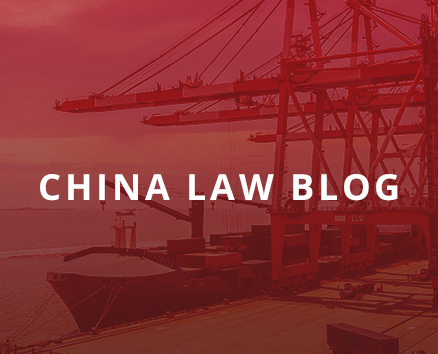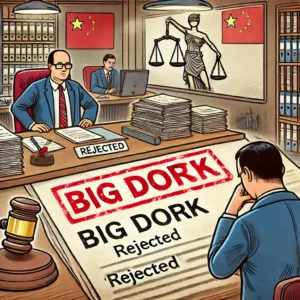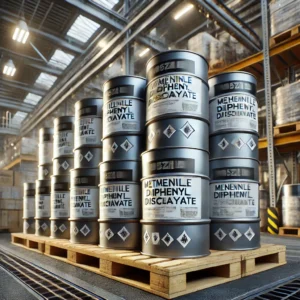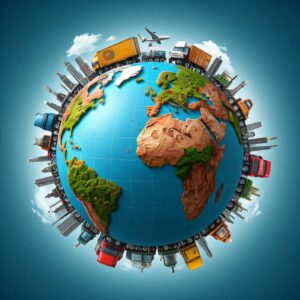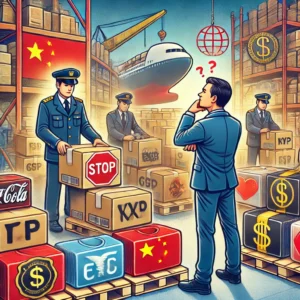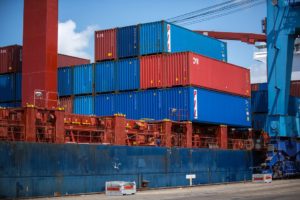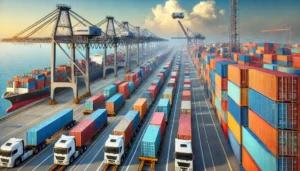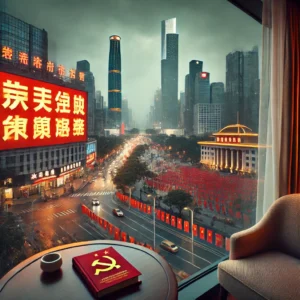China vs. Vietnam for Manufacturing
To say the global manufacturing landscape is in flux would be an understatement. What was once a relatively straightforward comparison of labor costs has evolved into a far more nuanced and strategic decision-making process. Geopolitical tensions, shifting trade and tariff regimes, technological disruption, environmental concerns, and changing consumer expectations have all layered complexity onto what used to be a primarily cost-driven equation.
As our law firm’s manufacturing practice outside of China continues to expand, we find ourselves increasingly involved in this global recalibration. More and more companies are reassessing where and how they produce, debating whether to shift operations from China to Vietnam, adopt a “China+1” strategy, or diversify across multiple jurisdictions. Ten years ago, about 90 percent of our international manufacturing work focused on China, with the remaining 10 percent almost entirely in other parts of Asia. Today, China accounts for around 60 percent—and the rest is scattered across the globe, from Southeast Asia to Eastern Europe to Latin America. We are presently working with a company that will be doing its manufacturing in Australia and the United States.
I’ve long been fascinated by how companies make these decisions. Over the years, I’ve asked hundreds of companies why they chose a particular country for manufacturing. In roughly half of those conversations, the answers were anything but conventional. That alone is telling: these decisions are rarely obvious, often surprising, and almost never one-size-fits-all.
The Changing Landscape of Global Manufacturing
The COVID-19 pandemic marked a turning point in how companies think about global supply chains. It laid bare the vulnerabilities of over-concentration and accelerated a shift that was already underway: a broad reassessment of the risks of relying too heavily on any one country—especially China—for critical manufacturing.
For decades, China was viewed as the world’s factory, offering scale, speed, and cost-efficiency. But in the wake of the pandemic, companies began viewing China through a more risk-adjusted lens. That reassessment intensified with Russia’s invasion of Ukraine, which made the once-hypothetical risk of a Chinese blockade or invasion of Taiwan feel startlingly real. Suddenly, the geopolitical calculus became far more complex—and far more urgent.
But moving manufacturing from one country to another isn’t only about hedging against political risk or reducing expenses. It’s about ensuring product quality, safeguarding intellectual property, improving responsiveness, and aligning supply chains with a company’s broader goals—whether those include ESG standards, customer expectations, or long-term strategic positioning.
What China Still Does Best
Despite growing diversification efforts, there’s no denying China’s enduring dominance in complex, high-volume manufacturing. Its vast, deeply integrated supply chains, world-class logistics infrastructure, and depth of technical expertise make it extraordinarily difficult to replicate—especially in sectors like consumer electronics, automotive components, industrial machinery, and medical devices.
This strength didn’t happen overnight. Decades of strategic government investment, skilled workforce development, and robust global partnerships have shaped China into a manufacturing powerhouse. Today, its ecosystem supports everything from large-scale assembly lines to highly specialized, precision-engineered production, all the way to cutting-edge smart factories powered by AI and robotics.
For companies that demand scale, speed, and technical sophistication, China remains not only relevant—it’s often indispensable. Amazingly enough, I still have plenty of companies tell me that China is still “way cheaper,” despite the 45% tariffs.
Vietnam’s Strengths and Momentum
Vietnam has rapidly established itself as a reliable, cost-effective manufacturing hub. While it was once best known for labor-intensive sectors such as garments, textiles, and footwear, the country is steadily climbing the value chain. Electronics assembly, precision manufacturing, and mid-tech production are expanding quickly—driven by substantial foreign direct investment and a government committed to economic modernization.
Vietnam’s appeal stems from a combination of strategic advantages:
- Lower labor costs than China
- A young, trainable workforce with growing technical skills
- Political and economic stability in a rapidly developing market
- A strategic geographic location in Southeast Asia
- Access to key trade agreements, including CPTPP and EVFTA
While Vietnam’s infrastructure remains a work in progress, the country has made significant strides. Expanded ports, upgraded expressways, and the establishment of special economic zones are helping Vietnam become more competitive. However, one of the most consistent challenges we see is capacity. The influx of foreign manufacturers—especially those shifting away from China—has at times strained Vietnam’s ability to absorb new demand, particularly in terms of skilled labor, logistics, and available factory space.
For companies entering Vietnam, local knowledge and strong in-country partners are often critical. Those who navigate these challenges thoughtfully tend to find that Vietnam offers both immediate advantages and long-term strategic value.
Tariffs, Trade, and Transshipment Risks
One of the biggest drivers of interest in Vietnam has been the U.S.-China trade war. Tariffs of up to 45% on many Chinese imports have made Chinese manufacturing significantly more expensive for U.S.-bound goods. But with these cost savings comes a critical caveat: compliance.
We advise clients regularly on the legal risks of transshipment—where goods made in China are falsely labeled as made in Vietnam to avoid tariffs. U.S. Customs and Border Protection (CBP) has ramped up enforcement. If you can’t prove origin, you risk stiff penalties, retroactive duties, and even brand damage.
To avoid these pitfalls, it’s essential to:
- Conduct on-the-ground factory audits
- Maintain clear documentation of supply chain flows
- Build compliance terms into supplier contracts
- Understand the rules of origin for every jurisdiction you ship to
Legal Safeguards and Smart Contracting
Whether you’re manufacturing in China, Vietnam, or anywhere else, the legal framework is critical. We’ve seen too many businesses run into avoidable trouble simply because they failed to secure proper protections—whether around intellectual property, quality control, or the ownership of product designs.
Some of the most effective legal tools to protect your interests include:
-
NNN Agreements (Non-Disclosure, Non-Use, Non-Circumvention)
-
Local trademark and patent registrations
-
Well-drafted manufacturing and supply agreements with clear quality standards and enforcement remedies
-
Product development agreements that establish IP ownership from the outset
-
Thorough supplier due diligence, including financial checks and compliance history
A strong legal foundation not only safeguards your IP and contractual rights—it also improves supplier accountability, deters misconduct, and gives you critical leverage if disputes arise.
In our article, Manufacturing in China: Minimizing Your Risks by Doing Things Right, we walk through various legal safeguards every company should consider when outsourcing their production. Nearly all of those recommendations apply just as strongly to Vietnam—and to most other international manufacturing markets as well. If you’re currently manufacturing overseas—or even just considering it—I strongly recommend reading that article.
China+1 and Beyond
For most companies, the smartest approach isn’t choosing between China and Vietnam—it’s strategically leveraging both. The increasingly popular “China+1” strategy allows businesses to maintain high-capacity, technically sophisticated operations in China while shifting other parts of the production process—such as assembly, packaging, or lower-risk manufacturing—to Vietnam or other lower-cost jurisdictions.
This model offers flexibility, cost efficiency, and risk mitigation. It’s also become a powerful way to respond to tariffs, geopolitical volatility, and changing customer expectations around sourcing.
Beyond Vietnam, we’re seeing rising interest in India, Thailand, Malaysia, Indonesia, Mexico, Colombia, and Peru, as companies pursue broader diversification strategies. Each country offers its own set of advantages and challenges, and the right fit depends on the product, market access needs, and supply chain complexity. But across the board, flexibility is the new gold standard in global manufacturing.
We’re also seeing a significant number of Chinese-owned manufacturers setting up factories outside China, particularly in Southeast Asia and Latin America. In some cases, these facilities are established to help circumvent tariffs or to serve customers looking for non-China origin products.
When clients come to us looking to diversify, we often recommend starting by (very carefully) exploring whether their existing Chinese manufacturer already operates facilities outside of China—in Vietnam, Mexico, or elsewhere. In some cases, this can allow for a smoother transition. However, it’s critical to vet these arrangements thoroughly to ensure that the offshore facility is legitimate, compliant, and not simply a shell operation aimed at facilitating illegal transshipping.
My Personal Connection to Vietnam
On a personal note, Vietnam is more than just a professional interest for me.
Years ago, my daughter chose Vietnam for her foreign study program. She immersed herself in the language, culture, and economy, and in doing so, she gained insights, skills, and lifelong friendships.
Vietnam is a favorite vacation destination for our family, and I go there fairly often for business as well. I am always struck by the optimism and warmth of the Vietnamese people. These personal connections have deepened my belief in Vietnam’s potential. It’s a country on the rise, and I’ve been pushing Vietnam as a China alternative for over a decade. See e.g., What’s Your Vietnam Strategy?
Conclusion: Manufacturing as a Strategic Asset
International manufacturing is about resilience, adaptability, and alignment with your company’s broader strategy. Choosing the right manufacturing location can unlock better margins, stronger IP protection, faster delivery times, and reputational benefits that compound over time.
Vietnam presents a compelling opportunity. Its economic trajectory, young and ambitious workforce, and increasingly sophisticated industrial base make it a smart alternative—or complement—to China. But it’s not a plug-and-play solution. It requires careful planning, experienced partners, and a realistic understanding of what Vietnam does well—and where its limits still lie.
Meanwhile, China remains a manufacturing superpower. In many industries, it is still the only place that can deliver the scale, specialization, cost or speed required to compete globally. For most companies, the solution isn’t to choose one over the other—but to balance both within a diversified, flexible strategy.
Whether you’re shifting away from China, expanding into Vietnam, or evaluating opportunities across several continents, we’re here to help you get it right.




